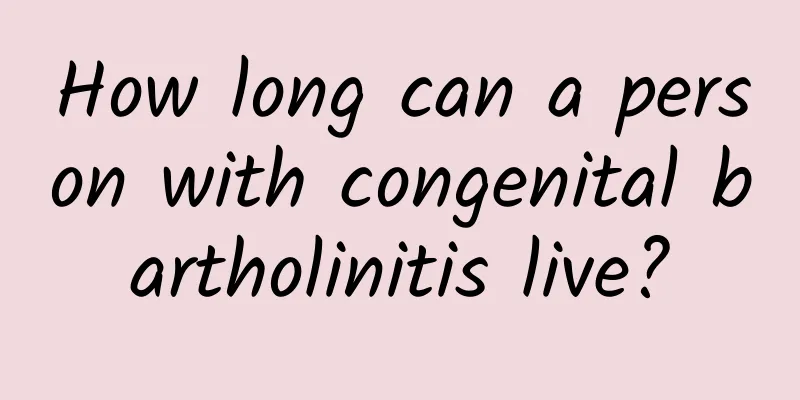Why is curettage done for pathology of uterine fibroids? What does curettage do for pathology of uterine fibroids mean?

|
Why do we need to do curettage and pathology for uterine fibroids? What does it mean to do curettage and pathology for uterine fibroids? Among gynecological diseases, uterine fibroids are a very common benign tumor. They are mainly composed of endometrium and uterine wall tissues, and usually do not cause malignant changes, but they can also have a certain impact on women's quality of life. In order to confirm and determine the characteristics of uterine fibroids, doctors usually use a series of methods such as ultrasound, clinical examination and curettage. So, why do people with uterine fibroids undergo curettage for pathological examination? Uterine fibroids curettage and pathology is a diagnostic method. The tissue specimens obtained through curettage can be analyzed pathologically, and the cell morphology and tissue structure can be observed under a microscope to determine whether it is a uterine fibroid. This method can confirm the diagnosis and rule out the possibility of other uterine diseases. Uterine fibroids curettage and pathology can determine the type of fibroids. Uterine fibroids are divided into different types, such as serous, fibroid, endometrial, etc. Through curettage, doctors can obtain fibroid tissue and determine the specific type through pathological examination. This plays an important guiding role in formulating subsequent treatment plans and controlling the progression of the disease. Next, let's look at some specific applications of curettage for uterine fibroids for pathology, some of which use serial numbers to better illustrate the point: 1. Pathological examination can determine the risk of malignant transformation of fibroids. Sometimes, the cytological characteristics of uterine fibroids may be similar to those of malignant tumors. Through pathological examination, the degree of cell mutation of fibroids can be evaluated, and whether there is a risk of malignant transformation can be determined, so as to formulate a reasonable treatment plan. 2. Pathological examination after curettage can observe the blood supply of fibroids. The growth of fibroids requires a large amount of blood supply. Through pathological examination, doctors can observe the richness of blood vessels in fibroids, abnormal blood vessel formation and other characteristics, which helps to understand the growth pattern of fibroids and possible treatment strategies. 3. Pathological examination after curettage guides preoperative preparation and surgical selection. If the fibroid is large or has unusual pathological characteristics, the doctor may recommend surgical treatment. Through pathological examination, the nature of the fibroid can be more fully understood, so as to choose the appropriate surgical method, such as fibroid removal, hysteromyomectomy, etc. Uterine fibroid curettage and pathology is an important diagnostic method that can clearly diagnose uterine fibroids and determine their types, assess the risk of malignant transformation, and guide the formulation of subsequent treatment plans. For gynecologists, it is very important to master and apply pathology techniques in order to provide more accurate and personalized diagnosis and treatment services so that patients can get better treatment results. |
Recommend
How big should uterine fibroids be removed?
If women suffer from uterine fibroids, it will ha...
What tests should be done for cervicitis
Cervicitis is one of the common gynecological dis...
What are the treatments for ovarian cysts?
Ovarian cysts are a common gynecological disease,...
Experts warn that complications of cervicitis should not be underestimated
Many women suffer from gynecological diseases, ce...
What causes abdominal pain after menstruation?
Lower abdominal pain after menstruation may be re...
Study the causes of leukoplakia from the perspective of traditional Chinese medicine
Many people may not have heard of vulvar leukopla...
Can exercise treat bacterial vaginosis?
In daily life, gynecological diseases have always...
What are the main symptoms of dysmenorrhea?
What are the main symptoms of dysmenorrhea? Dysme...
Treatment of Fungal Vaginitis Based on Syndrome Differentiation of Traditional Chinese Medicine
Treatment of fungal vaginitis based on TCM syndro...
What foods are the nemesis of uterine fibroids? What can you eat to eliminate uterine fibroids?
What foods are the best for uterine fibroids? Thi...
Are hormones effective for weight loss? Exposing the NG Weight Loss Method
When it comes to the hundreds of ways to lose wei...
What is the cause of infertility caused by artificial abortion?
There are more and more patients who have artific...
What is menopause?
A person's life is a process of continuous de...
Menstrual pain is equivalent to opening the fingers
Many female friends are familiar with menstrual p...
How can I get polycystic ovary at the age of 18?
Ovarian health has always been a hot topic for fe...









